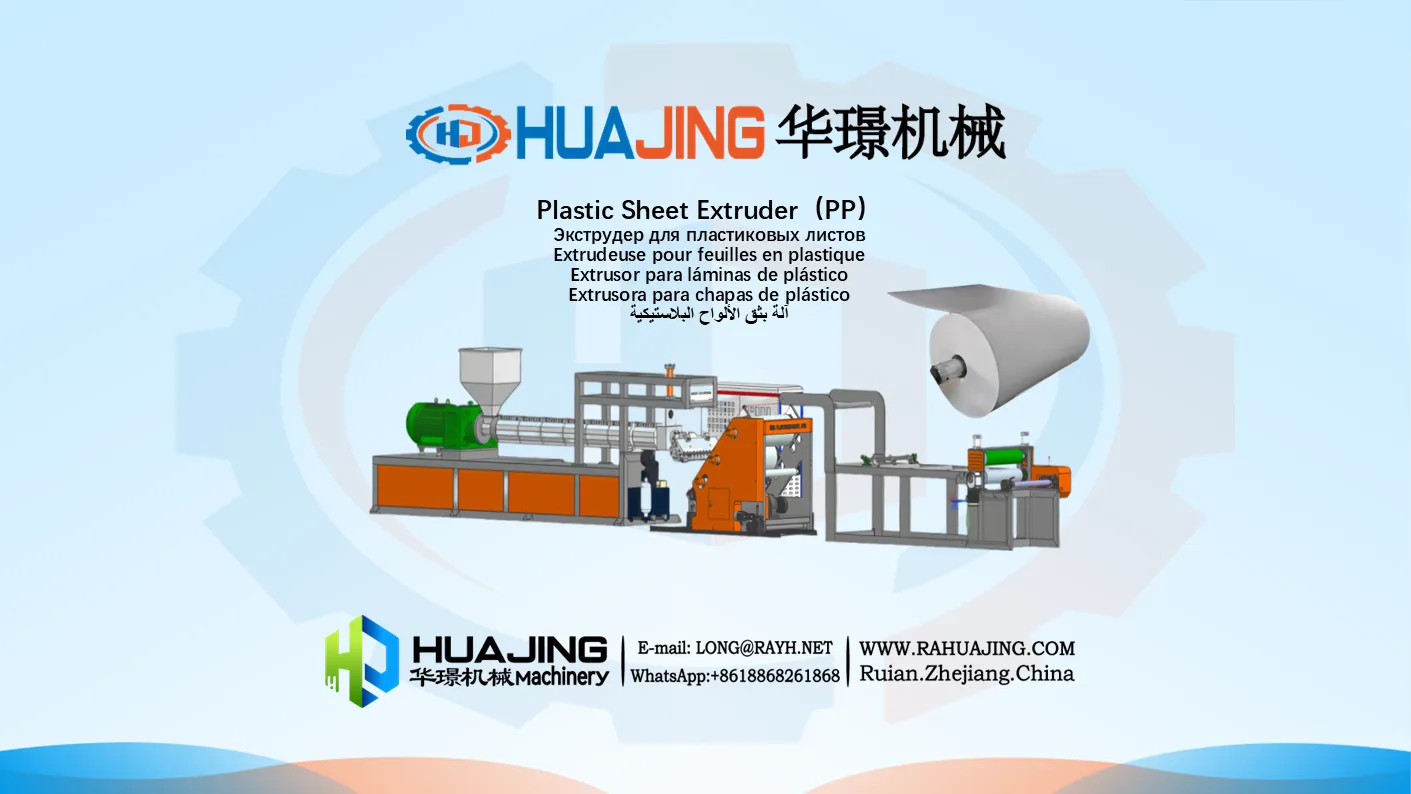
A plastic sheet extrusion line is an automated production line that processes plastic raw materials (pellets) through heating, melting, pressurization, extrusion, cooling, and shaping to produce continuous plastic sheets.
These sheets can then be further processed through subsequent thermoforming and other processes to become various everyday products, such as:
Food Packaging: Disposable cups, yogurt cups, jelly cups, fast food containers, trays.
Consumer Goods: Cosmetic packaging, toothbrush clamshells, stationery.
Core Components of a Plastic Sheet Extrusion Line
A complete production line primarily consists of three major systems: the Extrusion System, the Forming and Cooling System, and the Haul-Off and Winding System.
1. Extrusion System
This is the "heart" of the production line, responsible for melting and plasticizing solid plastic into a homogeneous melt and extruding it steadily.
Extruder: The core components are the screw and barrel. The rotating screw conveys, compresses, melts, and homogenizes the plastic. Based on function, the screw is typically divided into the feed section, compression section, and metering section.
Die (Head): This is a key component that determines the sheet's width and thickness uniformity. The molten plastic is formed into a flat, wide "curtain of melt" through the die. A coat-hanger die is commonly used; its flow channel design ensures consistent flow velocity and pressure across the entire width.
Screen Changer: Installed between the extruder and the die, it filters impurities and unplasticized particles from the melt, ensuring product quality and die safety. Types include manual and automatic continuous changers.
2. Forming and Cooling System
This is the "shaping workshop" of the production line, responsible for turning the melt into a solid sheet.
Three-Roll Stack (Calender): This is the most critical shaping device. It usually consists of three precision-machined metal rolls (top, middle, and bottom) that can be temperature-controlled with thermal oil or cooling water.
Functions:
Shaping: The melt from the die is immediately drawn into the nip between the top and middle rolls, being calendered to the desired thickness.
Cooling: The sheet passes over the three rolls and is gradually cooled.
Surface Finishing: The smooth surface of the rolls imparts a glossy or specific surface texture (e.g., matte) to the sheet.
Roll Temperature Control: Precisely controlling the temperature of each roll is key to ensuring surface quality (smoothness, no defects) and internal properties (reduced internal stress).
3. Haul-Off and Winding System
This is the "material handler" of the line, responsible for steadily transporting the formed sheet to the end and winding it into rolls.
Haul-Off Rolls: Typically a pair of rubber and metal rolls that grip the sheet and pull it forward at a constant speed, providing stable tension to ensure constant line speed and prevent deformation.
Edge Trimming System: Cuts off the uneven edges of the sheet. The trim is typically granulated by a crusher and recycled back into the extruder.
Winder (Rewinder): Winds the continuous sheet into neat, uniformly tensioned large rolls for transport and further processing.
Production Process Flow
Plastic Pellets → Loader → Extruder (Melting & Plasticizing) → Die (Forms melt curtain) → Three-Roll Stack (Shaping & Cooling) → Haul-Off Rolls → Edge Trimming → Winding → Inspection & Packaging
Key Technologies and Considerations
Raw Material: The most commonly used materials are PP (Polypropylene), PS (Polystyrene), etc. Processing temperatures and flow characteristics vary significantly between different materials.
Screw Design: The screw design (e.g., compression ratio, length-to-diameter ratio) must be selected based on the raw material's properties (such as its susceptibility to thermal degradation).
Temperature Control Precision: The temperature throughout the entire system—from each zone of the extruder barrel to the die and the three-roll stack—must be precisely controlled. Temperature fluctuations directly affect product quality.


